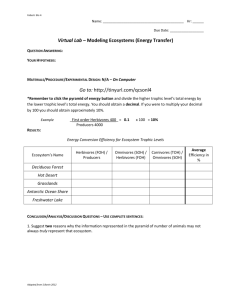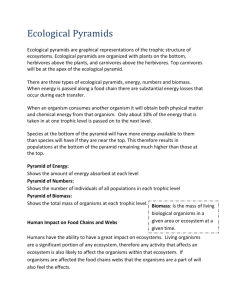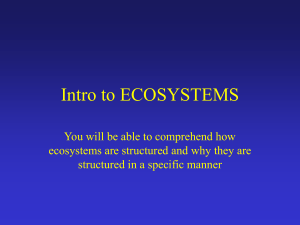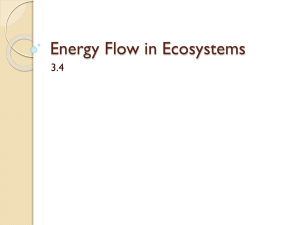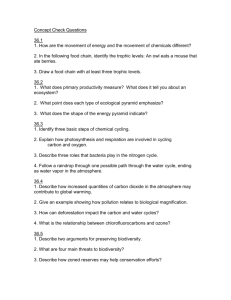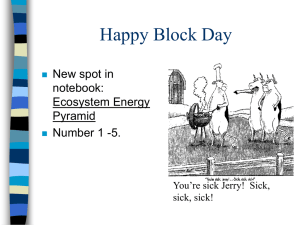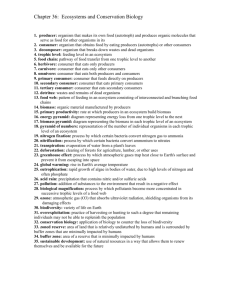Energy Transfer Article
advertisement
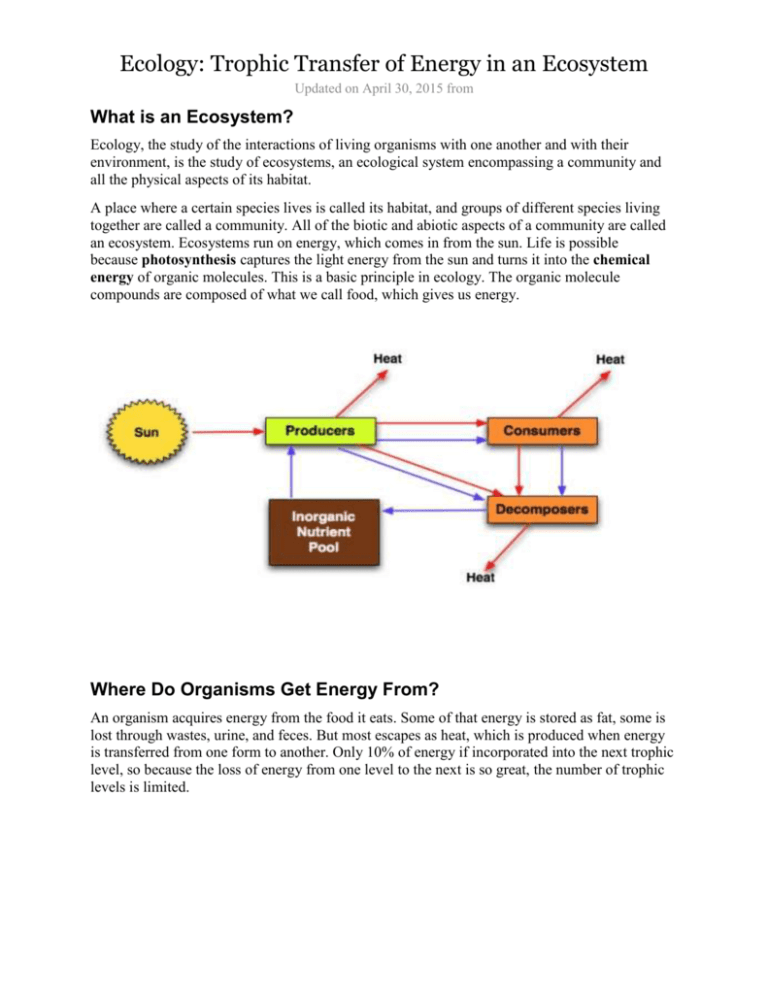
Ecology: Trophic Transfer of Energy in an Ecosystem Updated on April 30, 2015 from What is an Ecosystem? Ecology, the study of the interactions of living organisms with one another and with their environment, is the study of ecosystems, an ecological system encompassing a community and all the physical aspects of its habitat. A place where a certain species lives is called its habitat, and groups of different species living together are called a community. All of the biotic and abiotic aspects of a community are called an ecosystem. Ecosystems run on energy, which comes in from the sun. Life is possible because photosynthesis captures the light energy from the sun and turns it into the chemical energy of organic molecules. This is a basic principle in ecology. The organic molecule compounds are composed of what we call food, which gives us energy. Where Do Organisms Get Energy From? An organism acquires energy from the food it eats. Some of that energy is stored as fat, some is lost through wastes, urine, and feces. But most escapes as heat, which is produced when energy is transferred from one form to another. Only 10% of energy if incorporated into the next trophic level, so because the loss of energy from one level to the next is so great, the number of trophic levels is limited. The Energy Pyramid Energy Flow in an Ecosystem Energy transfer in an ecosystem, pyramid model Source: Stephsnature Energy flows through food webs, a network of feeding relationships in an environment, which contain food chains, a linear pathway of energy transfer in an ecosystem. Food chains are composed of trophic levels: a group of organisms that have the same source of energy. The Energy Pyramid is a model that shows how energy flows through a food chain. Producers form the base of the pyramid and help support all other organisms. Animals that consume the producers (primary consumers) occupy the next level. Consumers do not absorb all the energy stored in their food. In addition, they use some of this energy when they perform daily activities and lose energy in the form of heat. Only about 10 percent of the energy from each level of an energy pyramid is available to organisms in the next level. Transfer of Energy Numbers of Organisms: In any food web, energy is lost each time one organism eats another. Because of this, there have to be many more plants than there are plant-eaters. There are more autotrophs than heterotrophs, and more plant-eaters than meat-eaters. Although there is intense competition between animals, there is also an interdependence. When the population of one species decreases, it can affect an entire chain of other species and have unpredictable consequences. Equilibrium As the number of carnivores in a community increases, they eat more and more of the herbivores, decreasing the herbivore population. It then becomes harder and harder for the carnivores to find herbivores to eat, and the population of carnivores decreases as they compete for food. In this way, the carnivores and herbivores stay in a relatively stable equilibrium, each limiting the other's population. A similar equilibrium exists between producers and consumers. BIOMASS PYRAMID Diagram of the transfer of energy and heat loss in an ecosystem Answer the following questions: Name: ________________ 1. According to the image above, which level has the most energy available to them? EXPLAIN you answer. 2. What happens to the amount of energy as you move up each level of the energy pyramid? Explain your thinking. 3. How is the energy lost from each energy level? 4. What happens to the sizes of populations as you move up each level of the energy pyramid? Explain your thinking. 5. Using the energy pyramid model, explain why there are fewer third-level consumers than primary consumers. 6. What would happen to the energy in the energy pyramid if a disease destroyed half of the primary consumers? 7. If a drought destroys half of the producers in an energy pyramid, what will happen to the other levels of the energy pyramid? (Consider the role of competition in your response).
